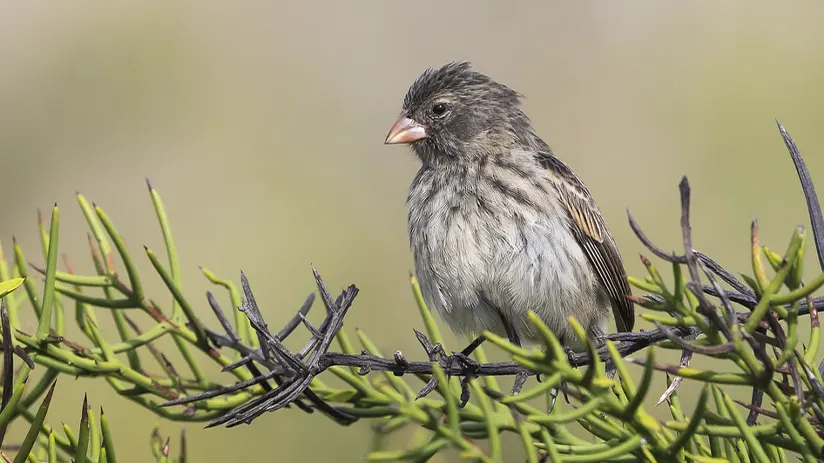Are you a bird lover? Have you ever imagined traveling to magnificent natural settings and witnessing various birds in all dimensions? In this post, we’ll explore the birds of the Galapagos Islands, one of the world’s most important ecosystems. Also, get ready to discover the most impressive secrets of these islands in Ecuador with Machu Travel Peru.
Here go again!
- Blue-footed-booby Blue
- Nazca Booby
- Red-footed Booby
- Galapagos Penguin
- Waved Albatross
- Galapagos Hawk
- Galapagos Mockingbird
- Galapagos Finches
- Galapagos Dove
- Galapagos Flycatcher
- Frequently questions
Blue-footed- booby Blue
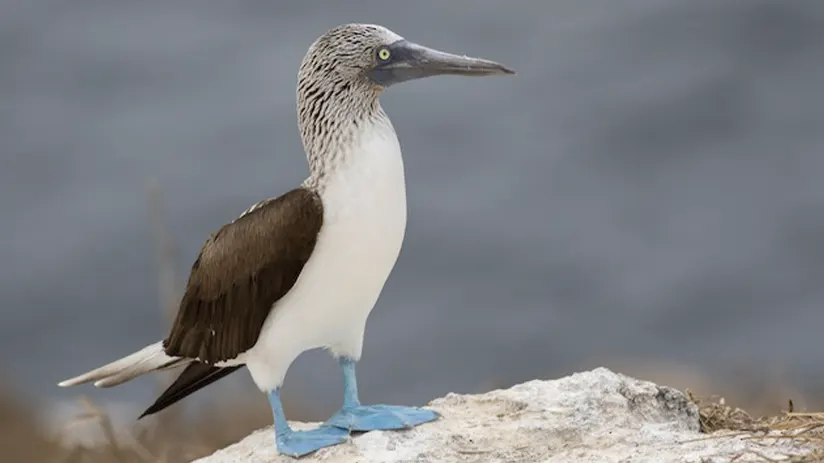
| Scientific name | Sula nebouxi |
| Habitat | Subtropical and tropical regions |
| Size | 81 cm. |
| Diet | Mostly fish and squid |
Perhaps one of the most recognizable birds in the Galapagos, the blue-footed booby is known for its distinctive bright blue feet and spectacular courtship displays.
Nazca Booby
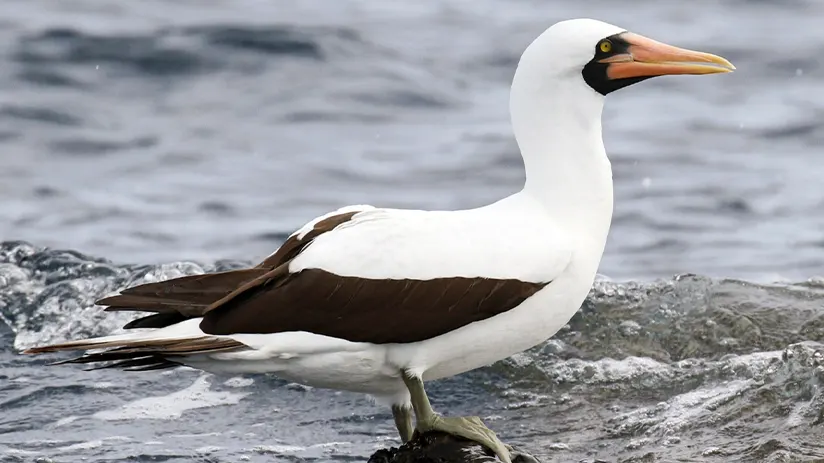
| Scientific name | Sula granti |
| Habitat | California in Galapagos |
| Size | 95 cm. |
| Diet | Pilchard and fish |
Similar in appearance to the blue-footed booby, the Nazca booby is distinguished by its white plumage and black wingtips. It is often found nesting on rocky cliffsides throughout the archipelago.
Red-footed Booby
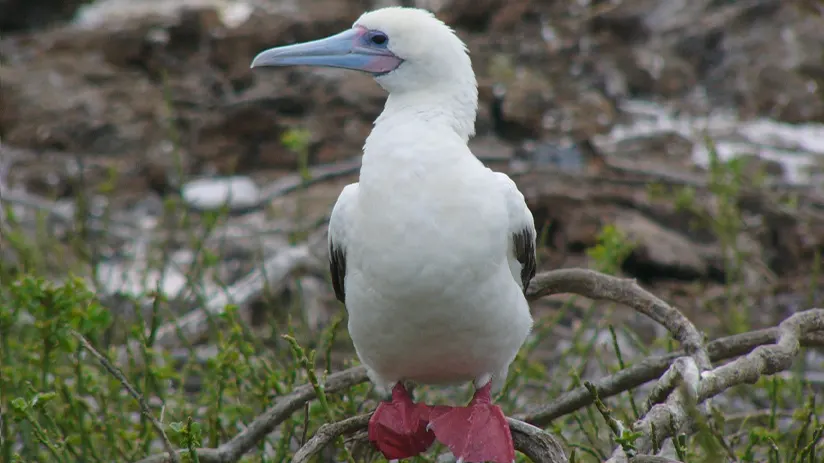
| Scientific name | Sula sula |
| Habitat | Tropical atolls and Galapagos Islands |
| Size | 20 cm. |
| Diet | Squid and fish |
Another booby species found in the Galapagos, the red-footed booby, is characterized by its striking red feet and a varied plumage that ranges from white to brown.
Galapagos Penguin
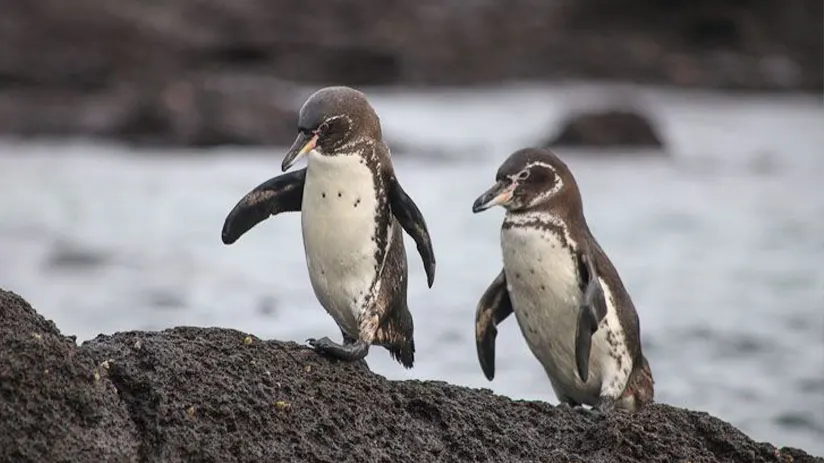
| Scientific name | Spheniscus mendiculus |
| Habitat | Isabela and Ferdina islands in Galapagos |
| Size | 53 cm. |
| Diet | Anchovies and mullet |
The only penguin species found north of the equator, the Galapagos penguin is adapted to the warm waters of the archipelago and is the smallest penguin species.
Flightless Cormorant Endemic to the Galapagos Islands, the flightless cormorant is unique among cormorant species in that it has lost the ability to fly and instead relies on its powerful swimming abilities for foraging.
Waved Albatross
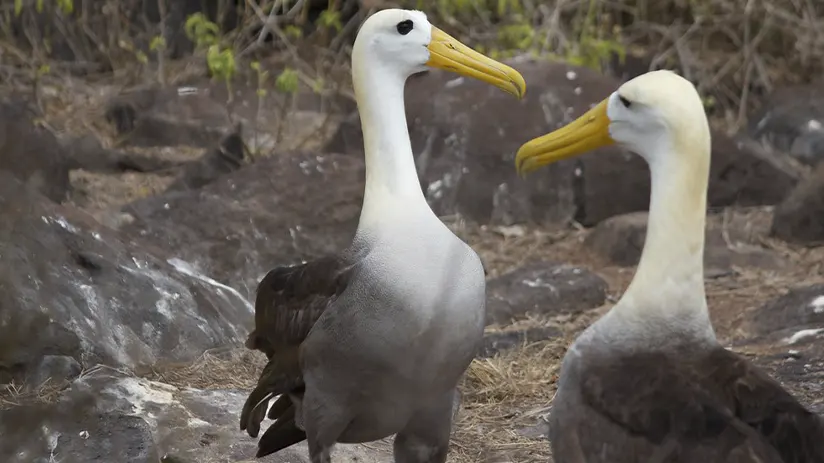
| Scientific name | Phoebastria irrorata |
| Habitat | Española Island in the Galapagos |
| Size | 80 – 90 cm. |
| Diet | Squid and marine invertebrates |
Known for its impressive wingspan, the waved albatross is a seabird species breeds exclusively on Española Island in the Galapagos.
Galapagos Hawk
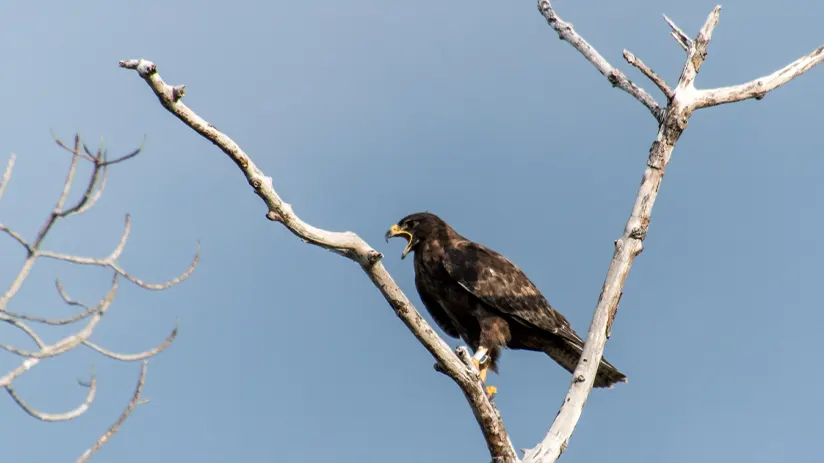
| Scientific name | Buteo galapagoensis |
| Habitat | Fernandina Islands |
| Size | 55 cm. |
| Diet | Rodents, birds, and young tortoises |
The top predator of the Galapagos Islands, the Galapagos hawk is a raptor species that prey on small vertebrates and is often seen soaring over the islands’ landscapes.
Galapagos Mockingbird
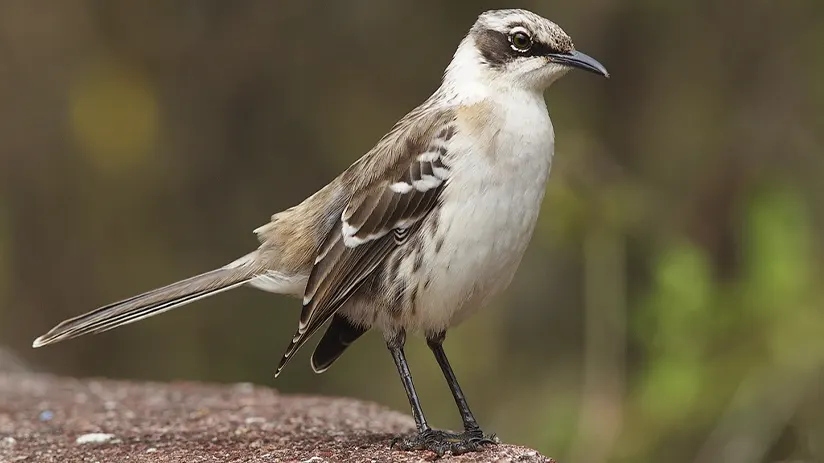
| Scientific name | Mimus parvulus |
| Habitat | Genovesa Island |
| Size | 25 – 26 cm. |
| Diet | Invertebrates to eggs and baby turtles |
Endemic to the Galapagos, the mockingbird is known for its inquisitive nature and ability to mimic the calls of other birds.
Galapagos Finches
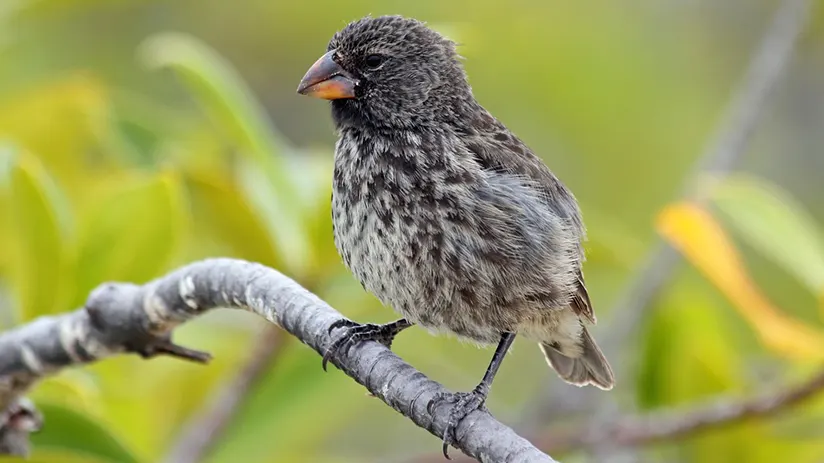
| Scientific name | Geospiza magnirostris |
| Habitat | Shrubland and dry forest |
| Size | 20 cm. |
| Diet | Pollen and néctar |
A group of 13 closely related finch species, collectively known as Darwin’s finches, these birds played a pivotal role in shaping Charles Darwin’s theory of evolution by natural selection.
Galapagos Dove
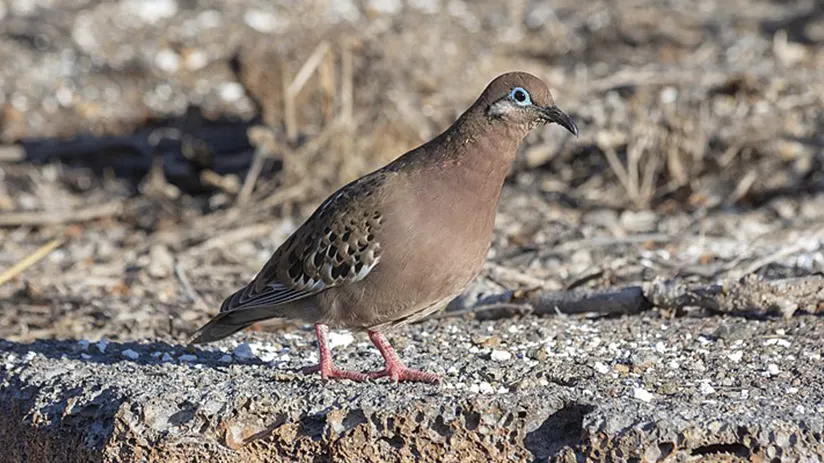
| Scientific name | Zenaida galapagoensis |
| Habitat | Arid lowlands of the archipielago |
| Size | 20 cm. |
| Diet | Caterpillars and cacti blossoms |
A small and inconspicuous dove species found in the Galapagos is often observed foraging for seeds and fruits on the ground.
Galapagos Flycatcher
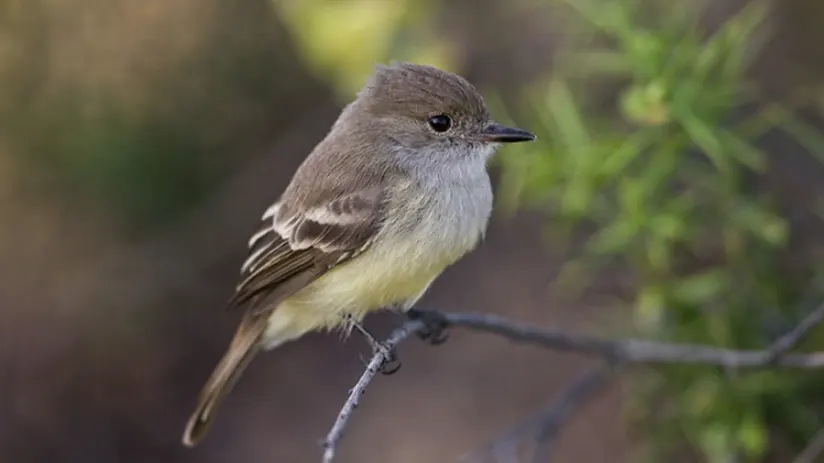
| Scientific name | Myiarchus magnitrosis |
| Habitat | Tropical and dry forests |
| Size | 15 – 16 cm. |
| Diet | Caterpillars and cacti blossoms |
This insect-eating bird species is characterized by its distinctive large bill and is found in various habitats throughout the archipelago.
These are just a few examples of the diverse bird species that inhabit the Galapagos Islands. Their unique adaptations and ecological roles make them integral components of the archipelago’s rich biodiversity.
Frequently questions
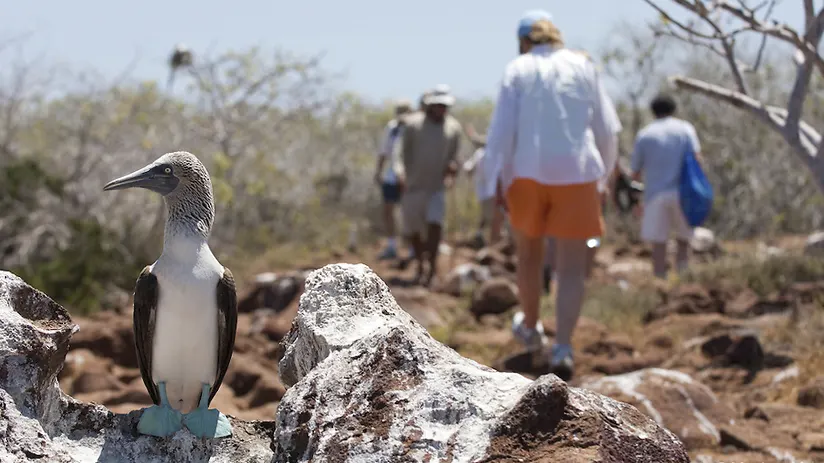
1. What unique bird species can be found in the Galapagos Islands?
The Galapagos Islands are home to several unique bird species, including the Galapagos Penguin, Flightless Cormorant, Waved Albatross, Galapagos Hawk, and Galapagos Finches.
2. How did the birds of the Galapagos evolve differently from their mainland counterparts?
The isolation of the Galapagos Islands allowed bird species to evolve in unique ways, adapting to the specific environmental conditions of each island. This led to the development of distinct species and subspecies, often with specialized traits suited to their habitats.
3. What role do birds play in the ecosystem of the Galapagos Islands?
Birds in the Galapagos Islands play crucial roles in pollination, seed dispersal, and insect population control. They also serve as indicators of ecosystem health and contribute to the islands’ overall biodiversity.
4. Are there any endemic bird species in the Galapagos?
The Galapagos Islands are home to numerous endemic bird species, meaning they are found nowhere else on Earth except in the Galapagos archipelago.
5. What are some of the most iconic bird species in the Galapagos archipelago?
Iconic bird species in the Galapagos include the Blue-footed Booby, Nazca Booby, Red-footed Booby, and the Galapagos Giant Tortoise, among others.
6. How do birds in the Galapagos Islands adapt to their environment?
Birds in the Galapagos have evolved various adaptations to survive in their unique habitats, such as specialized beak shapes for different diets, unique nesting behaviors, and efficient thermoregulation mechanisms.
7. What threats do birds in the Galapagos face, and what conservation efforts are in place to protect them?
Birds in the Galapagos face threats such as habitat destruction, invasive species predation, pollution, and climate change. Conservation efforts include habitat restoration, invasive species control, and public awareness campaigns.
8. Can visitors engage in birdwatching activities in the Galapagos Islands?
Yes, bird watching is among the things to do in the Galapagos Islands. You can do this on your own or take a bird-watching tour.
9. Are there any restrictions on interacting with birds in the Galapagos National Park?
Yes, visitors to the Galapagos National Park must adhere to strict guidelines to minimize their environmental impact. These include maintaining a safe distance from wildlife and refraining from feeding or touching birds.
“TRAVEL OPENS YOUR HEART, BROADENS YOUR MIND, AND FILLS YOUR LIFE WITH STORIES TO TELL”
We hope you’ve enjoyed exploring the diversity of species that inhabit these enchanted islands as much as we have. From the iconic blue-footed boobies to the elusive petrels, each bird has its role in the complex Galapagos ecosystem. Our publications have uncovered the unique adaptations that allow these birds to thrive in a challenging environment. From the extraordinary hunting skills of boobies to the fantastic ability of flightless cormorants to navigate underwater, each species has shown us a world of evolutionary wonders.
Also, depending on the sort of vacation you have planned, the best way to explore the world of birds in the Galapagos is eventually through a Galapagos Cruise. If you want everything to be coordinated and customized to your time and interests, we propose managing and selecting Galapagos Islands Tours.
We bid you farewell, hoping that Machu Travel Peru publications have awakened your curiosity and love for Galapagos birds. Until next time, curious explorers of the natural world! May feathers and trade winds guide you on your next adventures.
